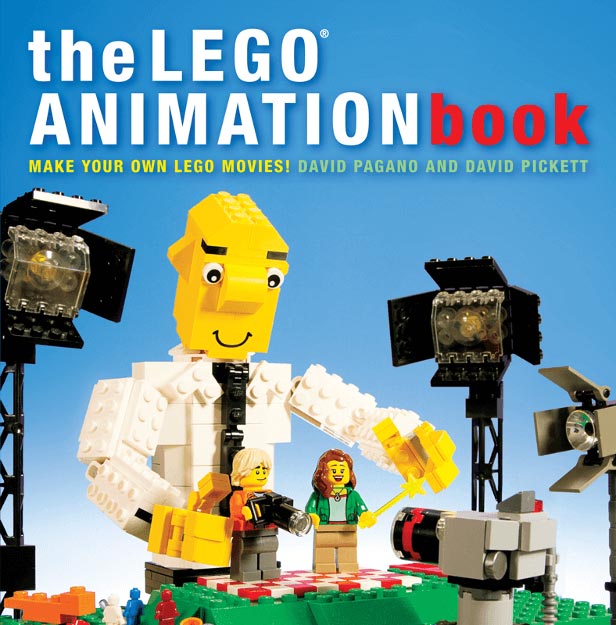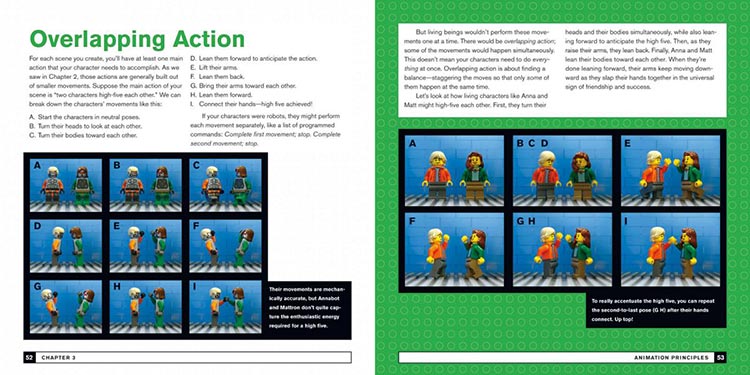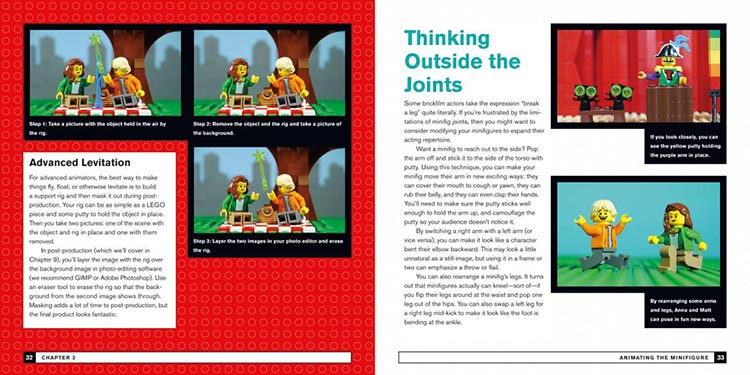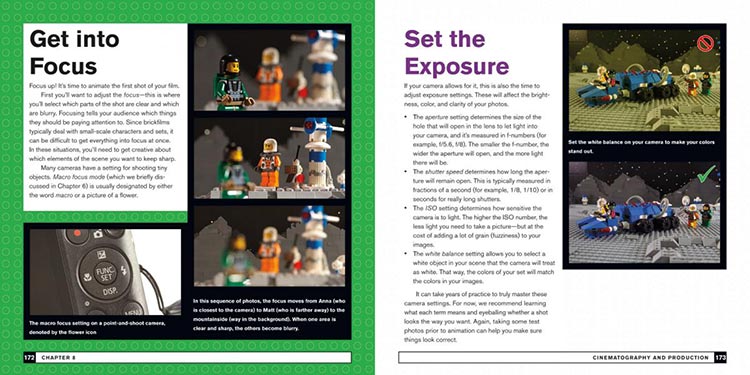Book Review: The LEGO Animation Book

LEGO Animation is becoming more and more popular. There are more and more YouTube channels with stop motion LEGO stories and even recent ReBrick contests have included animation challenges. The LEGO Animation Book—Make your own LEGO movies! (no starch press 2016) was written by two outstanding LEGO Stop-Motion creators—by David Pagano and David Pickett—and provides the perfect introduction to this exciting way of using LEGO in a novel and creative way. In their own words, the aim of the book was to create a “definitive reference for folks of all ages and skill levels”. Have they succeeded? Let’s take a closer look at their book and find out.
Stop motion is a complex art that, like many other arts and crafts, takes time, patience and skill. The LEGO Animation book is very much a hands on manual and is set up in such a way that you can start animating from chapter one, with only the bare basics. The tone of the chapter is accessible and entertaining. It truly is a book written for an audience ranging from the “8-year-old YouTuber to the 45-year old AFOL”. After setting the stage, introducing the basics, each chapter digs deeper into a specific area of LEGO animation, broaching more and more complex areas of stop-motion filmmaking.

Throughout the book, each concept is illustrated with pictures and stills from the companion film, The Magic Picnic. This example stop motion film is used to explain different techniques and the book contains a series of pictures of the sets and technical setup used to create the film. The authors of the book also turn up occasionally in the shape of minifigs, offering some additional advice and ideas. The central pages contain building instructions for the puppet used on the cover of the book. All these practical visuals make for colourful pages that are attractive to read, whether you want to dig deep into the subject or just pick out a paragraph or two.

The book not only covers “obvious” techniques like body poses and walking cycles or how to set up your studio and build a background. It goes much deeper and also covers subjects like how to convey expressions with body posture and animation or how to plan and put together a script and storyboard for a brickfilm. Last, but not least, there is lots of technical advice from what kind of software or camera to use to how to add sound and digital effects.

Whether you have just started or already have some experience making brick films, The LEGO Animation Book is a must have tool to take your stop-motion efforts to the next level. And even if you have never made a brick film in your life, after reading through this book you will be primed to get started on the LEGO movie of your dreams.
2256